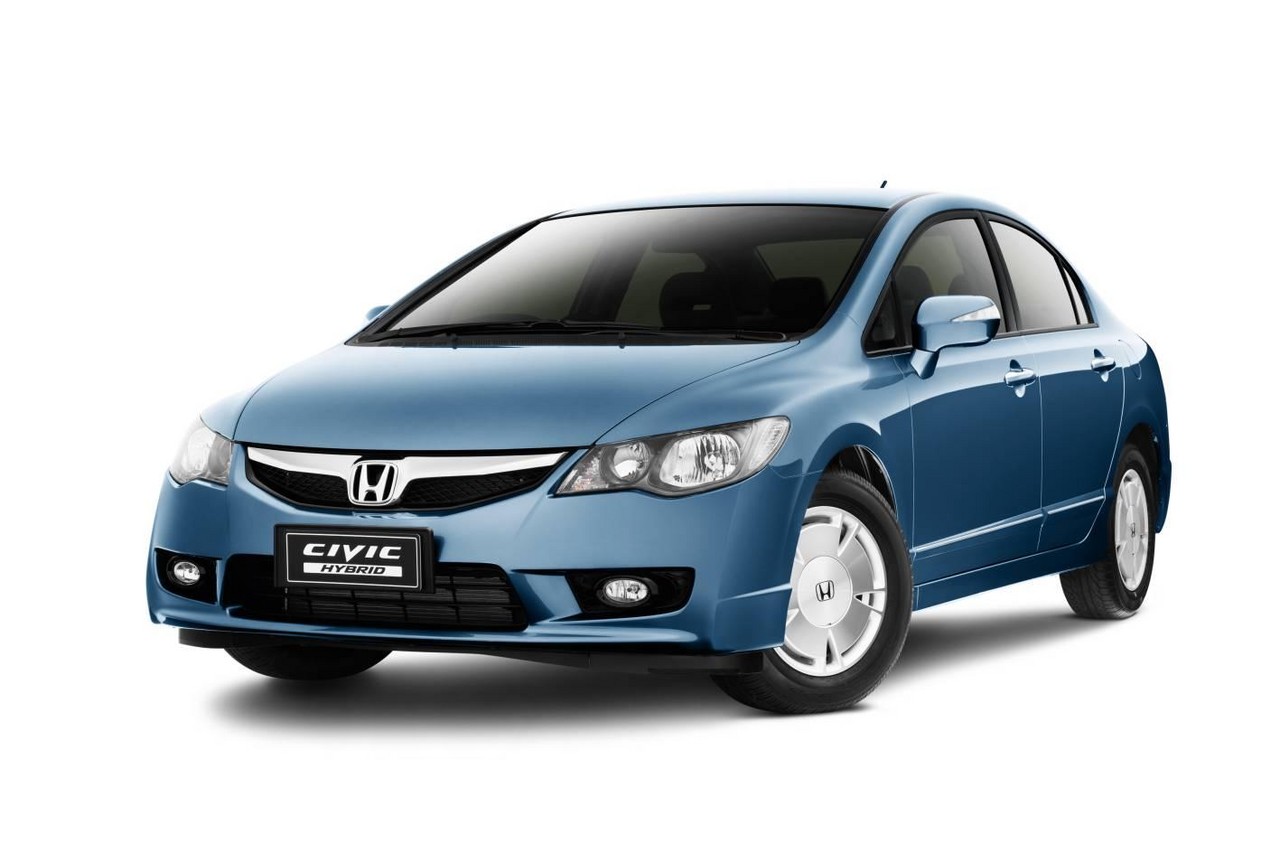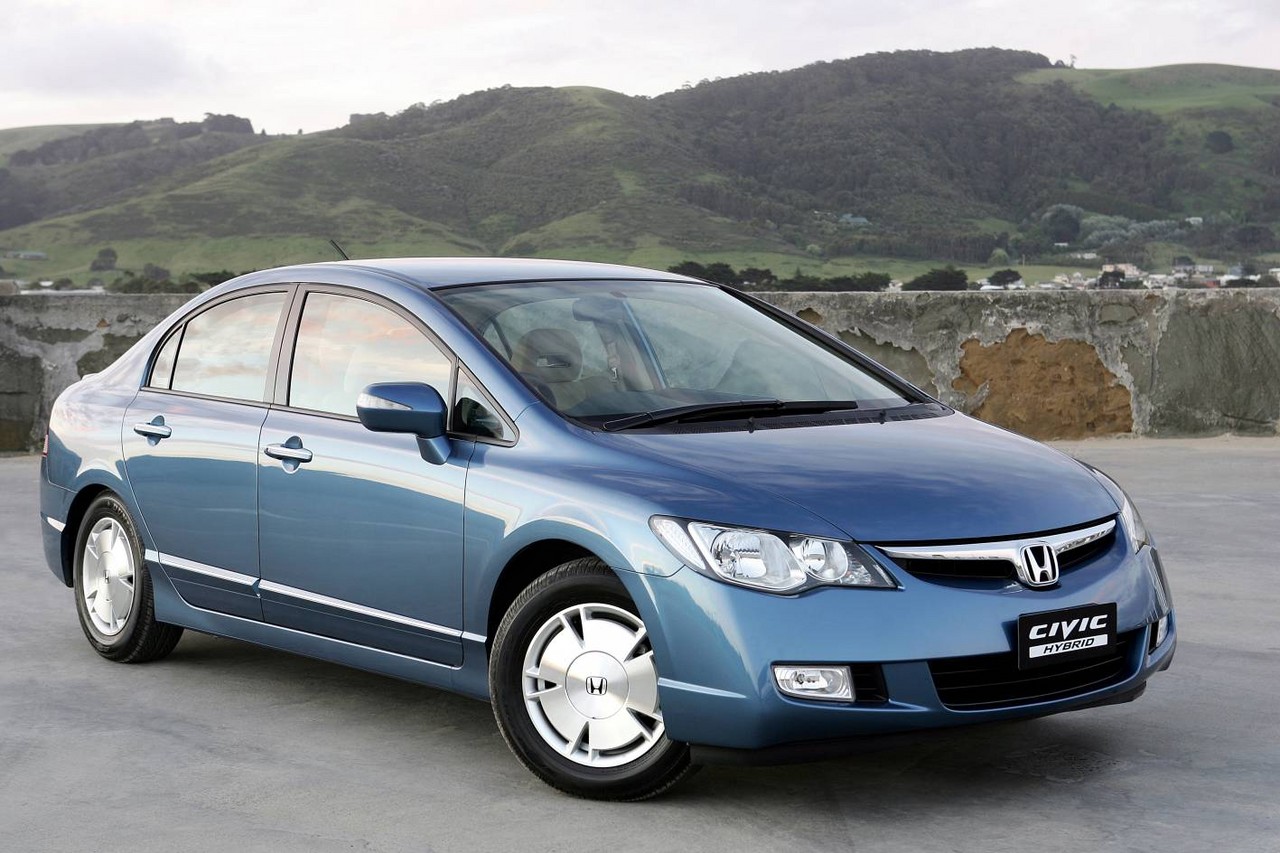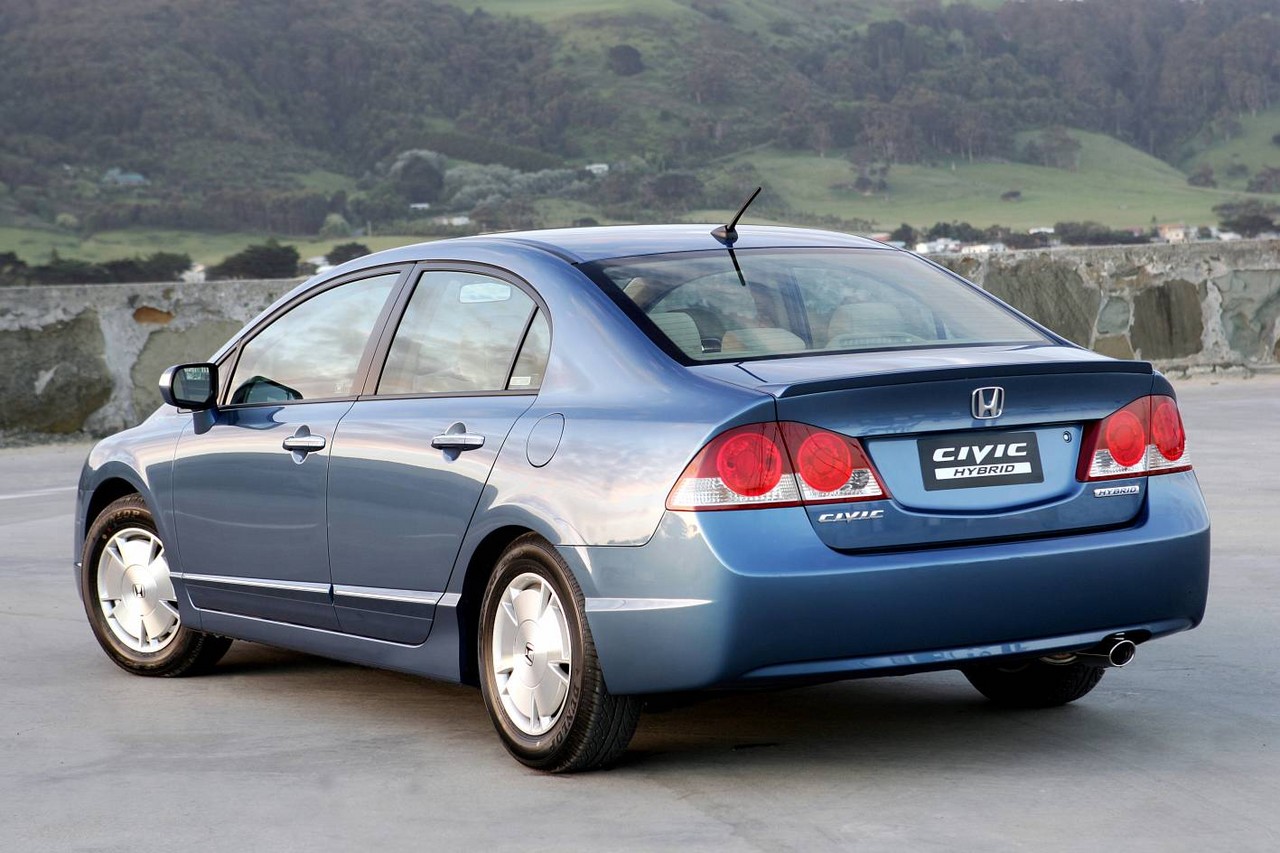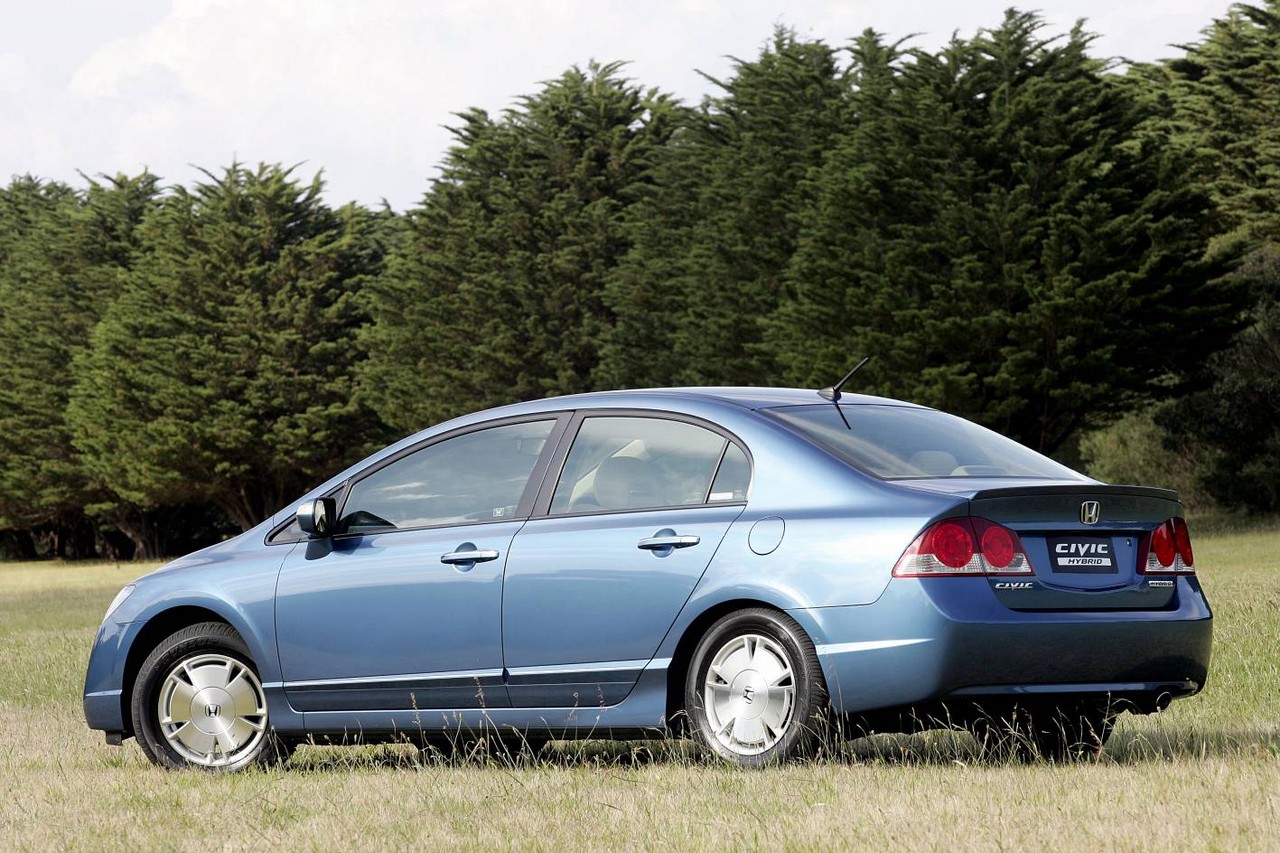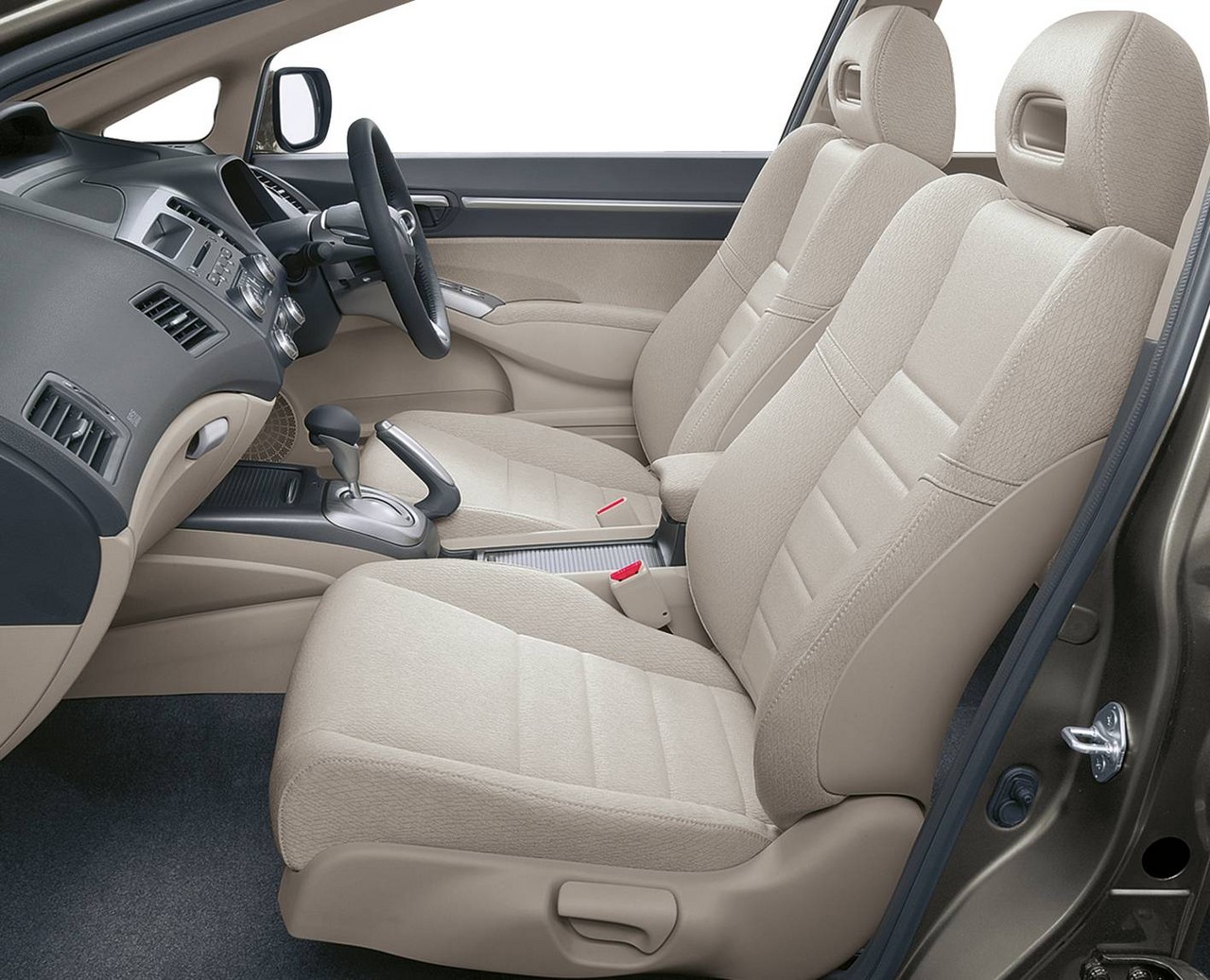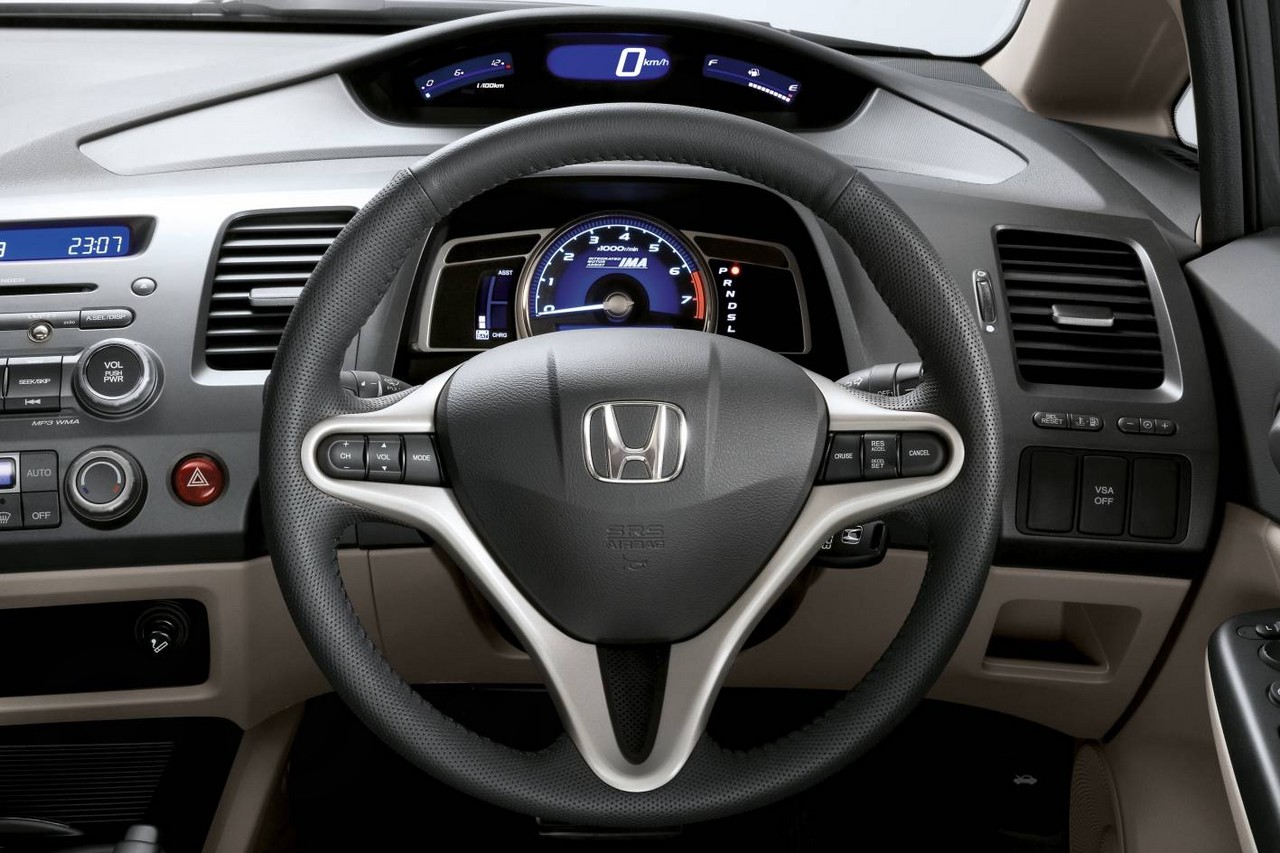
- Fuel-efficient powertrain
- Competent ride/handling balance
- Comfortable and spacious interior
- Hybrid system inferior to Toyota XW20 Prius
- Light steering around centre
- Can be jerky in stop-start traffic
- Variable brake pedal feel
- Engine noise at medium and higher speeds
Overview
Released in February 2006, the Honda FD3 Civic Hybrid was a small sedan. Manufactured in Suzuka, Japan, the FD3 Civic Hybrid had a 1.3-litre four-cylinder petrol engine and a 15 kW electric motor – powered by 158 volt nickel-metal hydride batteries – that drove the front-wheels via a continuously variable transmission.
MF5 engine and electric motor
The 1.3-litre MF5 ‘i-DSI’ four-cylinder engine had a single overhead camshaft, two valves per cylinder and featured:
- Lean-burn combustion which enabled it to operate at a 22:1 air-to-fuel ratio for more than 60 per cent of the time when driving on a flat road;
- ‘Idle stop’ which enabled the engine to automatically shut down when stationary in traffic and to restart when the driver removed their foot from the brake;
- Honda’s VTEC (Variable Valve Timing and Lift Electronic Control) system which provided the engine with camshaft profiles for low and high RPM operations; and,
- Three-stage Variable Cylinder Management (VCM) which could deactivate all four cylinders when cruising.
The Civic Hybrid’s electric motor assisted the petrol engine under acceleration and would act as a generator to recharge the nickel-metal hydride batteries when decelerating (i.e. regenerative braking). Unlike the corresponding XW20 Prius , however, the Civic Hybrid could not run in an electric-only drive mode. Over the combined ADR 81/02 cycle, the Civic Hybrid achieved fuel consumption of 4.6 litres per 100 km.
Dimensions and suspension
Compared to its ES9 Civic Hybrid predecessor, the FD3 Civic Hybrid was 80 mm longer (at 4550 mm), 35 mm wider (1750 mm) and had an 80 mm longer wheelbase (2700 mm), though its height was unchanged (1430 mm). Furthermore, an increased proportion of high-strength steel contributed to a 35 per cent increase in torsional rigidity and the coefficient of drag was reduced from 0.28 to 0.27. Like its predecessor, the FD3 Civic Hybrid had MacPherson strut front suspension and multi-link double wishbone rear suspension, albeit with revised tuning and a thicker rear anti-roll bar.
| Power source | Peak power | Peak torque |
|---|---|---|
| Petrol engine: 1.3-litre I4 | 69 kW at 6000 rpm | 121 Nm at 4500 rpm |
| Electric motor: 158 volt, nickel-metal hydride batteries | 15 kW | N/A |
| Combined: | 85 kW at 6000 rpm | 170 Nm at 1000-2500 rpm |
Safety equipment
Safety equipment for the FD3 Civic Hybrid included dual front airbags, front-side airbags, full-length curtain airbags (i.e. for front and rear occupants), ABS, electronic brake force distribution and front seatbelt pretensioners. From 2008, the Civic Hybrid was also fitted with electronic stability control and traction control.
Euro NCAP crash testing
In Euro NCAP crash testing , the Civic Hybrid received a four star adult occupant protection rating with a score of 30.71 out of 37. In the frontal offset crash test, protection from serious leg injury was marginal for the driver. Euro NCAP’s result included two points for driver and passenger seatbelt reminders – under ANCAP’s assessment , one of these points was omitted as the Civic Hybrid in Australia was only fitted with a driver’s seatbelt reminder.
Features: Civic Hybrid
Standard features for the FD3 Civic Hybrid included with 15-inch alloy wheels, a four speaker sound system with a six-disc CD player and MP3-compatibility, climate control air conditioning, front fog lamps, split and folding rear seat, a multi-function and leather-wrapped steering wheel, remote central locking, power mirrors and windows, a tilt and reach adjustable steering wheel, height adjustable driver’s seat and an immobiliser. From December 2006, the FD3 Civic Hybrid was also fitted with cruise control and electronic throttle control.
Related links
